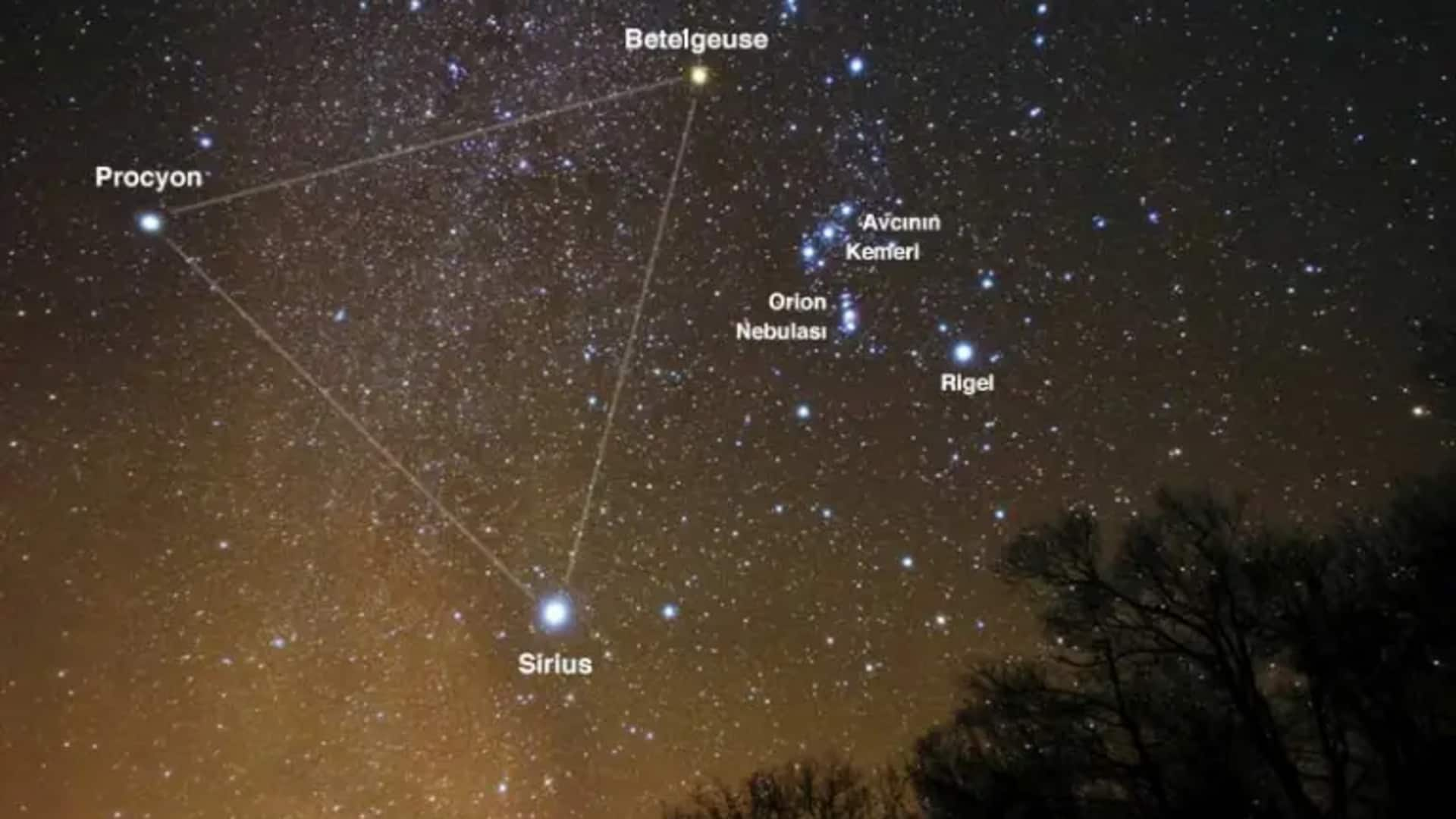
'Mars Triangle' meets 'Winter Triangle' in night-sky: What are they?
What's the story
The night sky this month is hosting a unique celestial spectacle, as two different triangles are visible.
The famous 'Winter Triangle' and the temporary 'Mars Triangle' are lighting up the cosmos.
The 'Winter Triangle' consists of three bright stars from different constellations: Sirius from Canis Major, Procyon in Canis Minor, and Betelgeuse in Orion the Hunter.
Meanwhile, the 'Mars Triangle' features two stars, Pollux and Castor from the Gemini constellation, with planet Mars marking its peak.
Celestial path
Winter Triangle's journey across the sky
The 'Winter Triangle' creates a near-perfect triangle in the southeast, peaking by 9:00pm and setting in the west around 2:00am. Meanwhile, the 'Mars Triangle' is a temporary formation that can only be seen for a short period during evening hours.
Shift
Mars Triangle's fleeting existence
The existence of the 'Mars Triangle' is short-lived. As the planet continues to move, it will soon distort the shape.
By the middle of March, this triangle is likely to disappear.
Since December 7, Mars has been moving in retrograde motion against the starry background, making it look like it is moving backward in the sky. On February 24, it will stop this motion and change direction.
Evolution
Transformation and eventual disappearance
On March 10, the 'Mars Triangle' will be transformed into something more like a right triangle, with the hypotenuse being Mars and Castor, and the right angle at Pollux.
As April nears, the triangle will become more and more distorted until finally on April 9, Mars, Pollux, and Castor will align in a straight line. This will be the end of this temporary celestial formation.